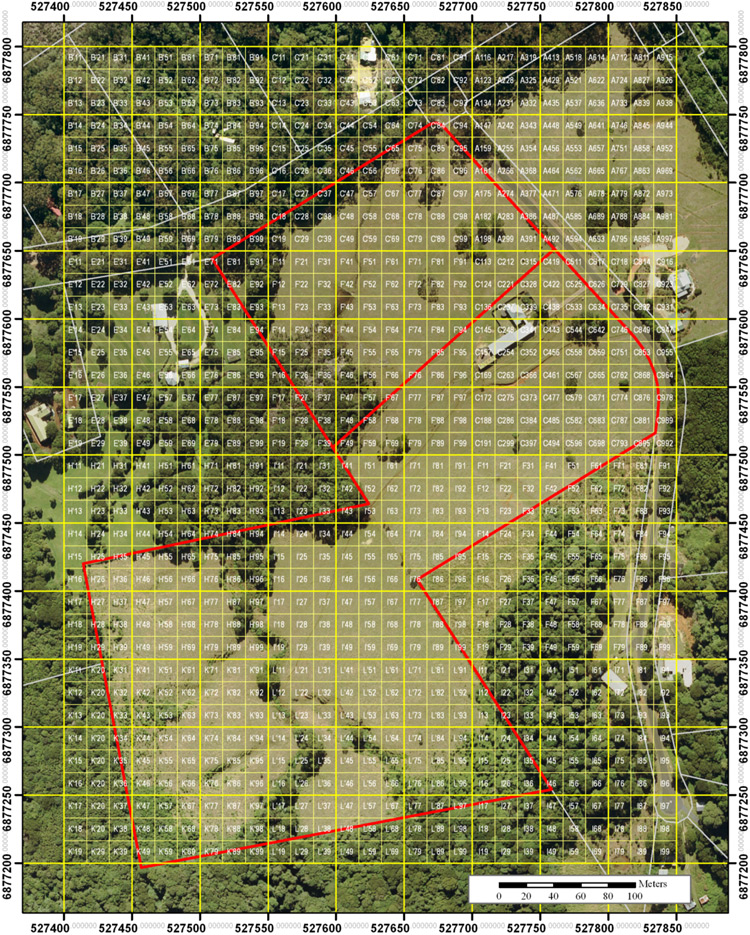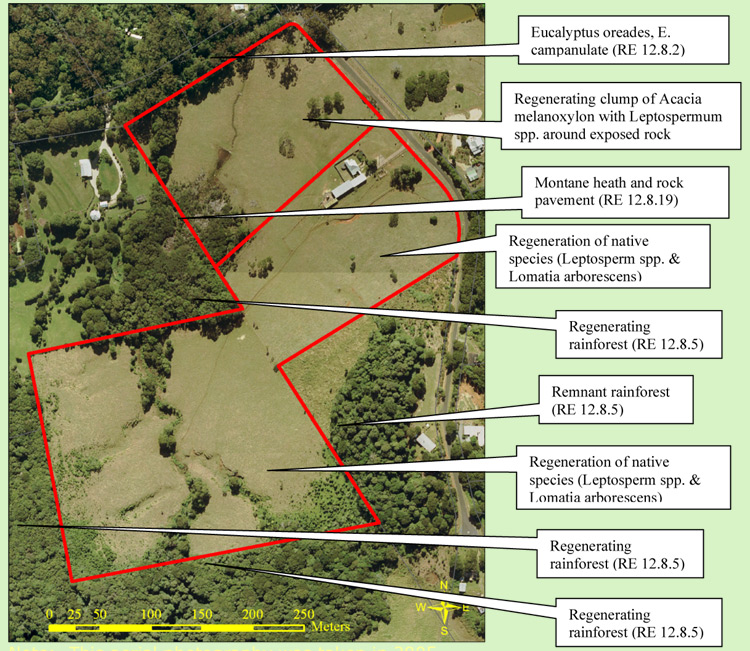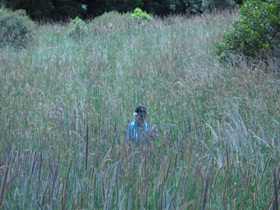Ashmiha Ashmiha is a 12-hectare property that has been largely cleared. Historically, it has been subject to grazing and slashing. Work on this property has focussed on control of aristea, control of exotic grass species, monitoring natural regeneration and growth measurements on regenerating native plants. Monitoring For the purpose of monitoring, the property has been divided into a 150-metre grid, further divided into 16.67 m x 16.67 m cells. |
|||||||||||||||||||||||||||||||||||||
 |
|||||||||||||||||||||||||||||||||||||
Natural regeneration Since the property was acquired by the Queensland Government in 2008, there has been significant regeneration of native species especially along the northern and southern boundaries. The main species are Leptospermum spp., Lomatia arborescens, Acacia melanoxylon, A. orites, A. ulicifolia, Persoonia media, Eucalyptus oreades and E. campanulata. A total of 33 species has been recorded including three rare species. |
|||||||||||||||||||||||||||||||||||||
 Note: This aerial photography was taken in 2005. Since then, there has been signficant natural regeneration. |
|||||||||||||||||||||||||||||||||||||
Six cells have been selected for growth measurements in the northern corner of the property. Measurements are made at the beginning of each season, recording height, breadth, general health (including mortality), leaf area index and herbivory. More than 1000 plants are being recorded
|
|||||||||||||||||||||||||||||||||||||
| Threats and barriers to restoration Aristea As a holding measure, teams of volunteers have removed flowers and fruits of aristea as well as digging up whole plants. Follow-up after digging is essential to detect rhizomes that were not completely removed. A separate page on this web site provides more information on aristea. Exotic grasses |
 Setaria sphacelata var. setaria on a nearby property (Warblers) |
||||||||||||||||||||||||||||||||||||
A major proportion of the property is covered by dense kikuyu (Pennisetum clandestinum). This has been controlled by mowing. Fireweed, Senecio madagascariensis, appears across the property annually. Whereas it is not considered to be a significant threat or barrier to regeneration, it is a Class 2 declared weed under the Land Protection (Pest and Stock Route Management) Act 2002, and is required to be controlled by landholders. Teams of volunteers have repeatedly removed fireweed by hand-pulling. Because of propagule pressure from its wind-dispersed seeds, it will not be eradicated until a canopy provides shading.
|
|||||||||||||||||||||||||||||||||||||